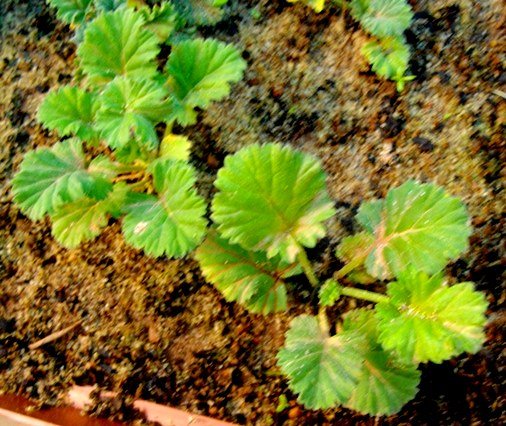Pelargonium stipulaceum

Author: Ivan Lätti
Photographer: Ivan Lätti
Pelargonium stipulaceum is a low-growing shrublet, 20 cm to 40 cm tall when in flower. Its sparsely branched green stems are hairless, almost glossy.
There are persistent stipules, triangular in shape next to the leaf petiole bases on the stems. The young stipules are dark, becoming whitish when they dry out. These notable stipules gave the plant its specific name.
The leaves are simple, sparsely covered in microscopic hairs, as well as a dense covering of glandular hairs. Leaves are rounded to heart-shaped with rounded tips and crenated or scalloped margins. The leaves become 5 cm long and 4,5 cm wide.
The inflorescence is a pseudo-umbel of two to five flowers on a long peduncle of up to 20 cm. The flowers are cream, occasionally white, often with faint, pale pink markings near the petal bases. The posterior (upper) pair of petals is slightly larger than the three anterior (lower) ones. Seven fertile stamens of three lengths are present per flower, bearing yellow anthers. Flowering happens in spring.
The species occurs in the Northern and Western Cape, the plants growing in rock crevices.
The habitat is scrubveld, Nama Karoo and succulent Karoo in sandy soils receiving winter rain. There are two subspecies, viz. subsp. stipulaceum and subsp. ovato-stipulatum. The habitat populations of both are considered of least concern early in the twenty first century (Bond and Goldblatt, 1984; iNaturalist; www.pelargonium.si; http://redlist.sanbi.org).

